This site uses cookies as defined in our Cookie Policy, by continuing to use this site you agree to their use.
Continue
| Arrive | Depart | ||||||
| 7th07 | JulJul | 202323 | Frankfurt, Germany, embark on the TUI Maya | 02:00 | |||
| You might hear Frankfurt referred to by another name – Mainhattan, alluding to the city’s setting on the Main River, as well as its futuristic skyline. But, mixed in with the new, there are timber houses and red-brick churches. Lots of the city was damaged in World War Two, but it’s since undergone a huge restoration project. Römerberg square’s now lined with traditional, Medieval-style buildings. Palmengarten is Frankfurt’s version of Kew Gardens, with zones dedicated to rainforest, sub-Antarctic and desert plants. And the 200-year-old Städel Museum houses artworks by Van Gogh, Monet and Rembrandt. Get a feel for Frankfurt on the Ebbelwei Express tram, which does a circuit of the city, rattling past the zoo and Römerberg. | |||||||
| 8th08 | JulJul | 202323 | Boppard, Germany | ||||
| The German town of Boppard’s main claim to fame is its wine. White Riesling and red Pinot Noir’s been bottled here for centuries, starting off life in the vineyards – including the biggest in the Middle Rhine Valley – outside of town. The bars and restaurants here put on tasting sessions where you can sample them for yourself. You’ll find them clustered along the waterfront – which is also home to traditionally German, 16th-century architecture and museums – and around the modern-meets-Medieval town square. Wander around the Electoral Castle. It was built in the 13th century, and has been a hospital, a prison and a police station. These days it’s a museum, and you can dive deep into all this history through the exhibits here. | |||||||
| 8th08 | JulJul | 202323 | Oberwesel, Germany | ||||
| Known as the town of towers, Oberwesel hugs the hills that flank the Rhine. Its Medieval architecture and production of Riesling wine are two of this town’s shout-about features, plus it’s bookended by a couple of Gothic churches. You’ll find a market square at its centre, and from here you can take some stairs up to the old city wall. Walk along this stretch – it lies parallel to the river, and has some top-notch views of the Rhine Valley. Oberwesel also used to have 21 defensive towers – 16 of these remain intact today. The footpath that runs along the outside of the town wall provides the best sights of these looming stone giants. And for more on the town’s history, visit the Kulturhaus Museum. | |||||||
| 9th09 | JulJul | 202323 | Koblenz, Germany | ||||
| Located in the West of the country, Koblenz is one of the oldest cities in Germany. It is situated on both banks of the river Rhine, at its confluence with the Moselle River. The beginnings of Koblenz can be traced back to its military beginnings around 8 BC. The city is rich in its history and heritage and is easily explored on foot. Take the cable car crossing over the river Rhine for spectacular aerial views or enjoy the city from the one thousand year old fortress, Ehrenbreitstein. The upper middle Rhine Valley is a UNESCO World Heritage Site and its unique landscape can be enjoyed and discovered through the interactive multimedia journey at the Romanticum. Historical and architectural sites of interest include Stolzenfels Castle, the Electoral Palace of Koblenz and Old Town. From the romantic winding streets and small squares of Old Town, stroll through the alleyways from the Church of the Holy Virgin to the St Kastor Basilica and enjoy the picturesque buildings and squares along the way. Koblenz is also very popular for its Riesling and strong Spatburgunder wines since the Romans introduced it two thousand years ago. Settings like Koblenz’s don’t come around often. The city’s a meeting place of mountains and rivers and the Rhine and Moselle rivers come together here, too. The waterfront’s dotted with UNESCO-stamped forts and palaces, while fairy tale castles christen the hilltops on the edge of town. And the surrounding valleys are teeming with terraced vines and world-class wineries. You can take a cable car up to the Ehrenbreitstein Fortress for spectacular views over the city and its two rivers. When you arrive at the fort, you can explore its many museums, as well. Alternatively, catch a bus to Schloss Stolzenfels. This hilltop-castle-turned-palace is super-grand, which is fitting considering it’s played host to guests like Queen Victoria. | |||||||
| 10th10 | JulJul | 202323 | Bonn, Germany | ||||
| Bonn is made for sightseeing. First off, you’ve got presidential palaces that hark back to when the city was the capital of West Germany during the Cold War. Elsewhere, thousand-year-old churches are packed in with glass-front shopping centres, which sit on streets decorated with Japanese cherry blossom trees. Visit in April and you’ll see the purply-pink leaves come in to bloom. Plus, the museums here cover everything from Ancient Rome to the city’s most famous resident, Beethoven. Go for a walk along the river, meanwhile, and you’ll see the landscape change from cobbled streets to waterfront parks, which play host to weekend markets and music concerts in the summer months. Germany’s famous wine country’s ripe for exploring in the nearby valleys. Here, you can sample award-winning reds after a tour of the Gothic castles. | |||||||
| 11th11 | JulJul | 202323 | Düsseldorf, Germany | ||||
| Dusseldorf is one of the most modern cities that flank the Rhine. At first glance it looks very business-orientated, with its banking, advertising and fashion industries recognised globally. Spend a few hours exploring, though, and you’ll discover an old quarter where pork knuckles are served with beer, and archaic theatres are set back off the pavement. Also of note is Dusseldorf harbour. It’s one of the city’s latest developments, and is recognised for its impressive avant-garde architecture – like Claude Vasconi’s Grand Bateau, built to resemble an ocean liner. Dusseldorf’s metroline’s an arty masterpiece, too – it’s decorated with geometric shapes and projections of planets and even has some LED walls. | |||||||
| 12th12 | JulJul | 202323 | Rotterdam, Netherlands | ||||
| Rotterdam is a city that's a long way removed from most people's stereotypical notion of the Netherlands. There are few, if any, canals to be found here nor are there any quaint windmills. There is, however, a thriving modern city which is one of the busiest ports in the entire world. You might hear Rotterdam referred to by a different name – the Gateway to the World, thanks to all the roads, rivers and railways that pass through it. And as Europe’s biggest port, it’s packed with lots of things to do, too. Start off by getting a bird’s eye view of the city from the top of the Euromast Tower – the tallest building in Rotterdam. Snap some photos from the viewing platform, then head to the restaurant for a sweet stroopwafel pastry. Over in the old quarter, you can learn about the bombing of Rotterdam during a tour of the 600-year-old St Lawrence Church – the only building in the area left standing after World War 2. Then, go for a wander around the city’s collection of art galleries, where you’ll see pieces by Picasso, Rembrandt and Van Gogh. | |||||||
| 13th13 | JulJul | 202323 | Amsterdam, Netherlands | ||||
| Amsterdam combines the unrivaled beauty of the 17th-century Golden Age city center with plenty of museums and art of the highest order, not to mention a remarkably laid-back atmosphere. It all comes together to make this one of the world's most appealing and offbeat metropolises in the world. Built on a latticework of concentric canals like an aquatic rainbow, Amsterdam is known as the City of Canals—but it's no Venice, content to live on moonlight serenades and former glory. Quite the contrary: on nearly every street here you'll find old and new side by side—quiet corners where time seems to be holding its breath next to streets like neon-lit Kalverstraat, and Red Light ladies strutting by the city's oldest church. Indeed, Amsterdam has as many lovely facets as a 40-carat diamond polished by one of the city's gem cutters. It's certainly a metropolis, but a rather small and very accessible one. Locals tend to refer to it as a big village, albeit one that happens to pack the cultural wallop of a major world destination. There are scores of concerts every day, numerous museums, summertime festivals, and, of course, a legendary year-round party scene. It's pretty much impossible to resist Amsterdam's charms. With 7,000 registered monuments, most of which began as the residences and warehouses of humble merchants, set on 160 man-made canals, and traversed by 1,500 or so bridges, Amsterdam has the largest historical inner city in Europe. Its famous circle of waterways, the grachtengordel, was a 17th-century urban expansion plan for the rich and is a lasting testament to the city’s Golden Age. This town is endearing because of its kinder, gentler nature—but a reputation for championing sex, drugs, and rock ’n’ roll does not alone account for Amsterdam's being one of the most popular destinations in Europe: consider that within a single square mile the city harbors some of the greatest achievements in Western art, from Rembrandt to Van Gogh. Not to mention that this is one of Europe's great walking cities, with so many of its treasures in the untouted details: tiny alleyways barely visible on the map, hidden garden courtyards, shop windows, floating houseboats, hidden hofjes(courtyards with almshouses), sudden vistas of church spires, and gabled roofs that look like so many unframed paintings. And don’t forget that the joy lies in details: elaborate gables and witty gable stones denoting the trade of a previous owner. Keep in mind that those XXX symbols you see all over town are not a mark of the city's triple-X reputation. They're part of Amsterdam's official coat of arms—three St. Andrew's crosses, believed to represent the three dangers that have traditionally plagued the city: flood, fire, and pestilence. The coat's motto ("Valiant, determined, compassionate") was introduced in 1947 by Queen Wilhelmina in remembrance of the 1941 February Strike in Amsterdam—the first time in Europe that non-Jewish people protested against the persecution of Jews by the Nazi regime. Criss-crossed by bridges and canals, Amsterdam is known as the Venice of the north. But its waterways are not all it’s famous for. In fact, mention the name of The Netherlands' capital city and you’ll get a whole list of associations. Clogs, cheese and windmills top the list, followed closely by World War history, cutting-edge art and coffee shops. One thing’s for sure, when you join the millions of tourists that flock to the city every year, you won’t have to look hard to find something that interests you.
| |||||||
| 14th14 | JulJul | 202323 | Amsterdam, Netherlands, disembark the TUI Maya | ||||
| Amsterdam combines the unrivaled beauty of the 17th-century Golden Age city center with plenty of museums and art of the highest order, not to mention a remarkably laid-back atmosphere. It all comes together to make this one of the world's most appealing and offbeat metropolises in the world. Built on a latticework of concentric canals like an aquatic rainbow, Amsterdam is known as the City of Canals—but it's no Venice, content to live on moonlight serenades and former glory. Quite the contrary: on nearly every street here you'll find old and new side by side—quiet corners where time seems to be holding its breath next to streets like neon-lit Kalverstraat, and Red Light ladies strutting by the city's oldest church. Indeed, Amsterdam has as many lovely facets as a 40-carat diamond polished by one of the city's gem cutters. It's certainly a metropolis, but a rather small and very accessible one. Locals tend to refer to it as a big village, albeit one that happens to pack the cultural wallop of a major world destination. There are scores of concerts every day, numerous museums, summertime festivals, and, of course, a legendary year-round party scene. It's pretty much impossible to resist Amsterdam's charms. With 7,000 registered monuments, most of which began as the residences and warehouses of humble merchants, set on 160 man-made canals, and traversed by 1,500 or so bridges, Amsterdam has the largest historical inner city in Europe. Its famous circle of waterways, the grachtengordel, was a 17th-century urban expansion plan for the rich and is a lasting testament to the city’s Golden Age. This town is endearing because of its kinder, gentler nature—but a reputation for championing sex, drugs, and rock ’n’ roll does not alone account for Amsterdam's being one of the most popular destinations in Europe: consider that within a single square mile the city harbors some of the greatest achievements in Western art, from Rembrandt to Van Gogh. Not to mention that this is one of Europe's great walking cities, with so many of its treasures in the untouted details: tiny alleyways barely visible on the map, hidden garden courtyards, shop windows, floating houseboats, hidden hofjes(courtyards with almshouses), sudden vistas of church spires, and gabled roofs that look like so many unframed paintings. And don’t forget that the joy lies in details: elaborate gables and witty gable stones denoting the trade of a previous owner. Keep in mind that those XXX symbols you see all over town are not a mark of the city's triple-X reputation. They're part of Amsterdam's official coat of arms—three St. Andrew's crosses, believed to represent the three dangers that have traditionally plagued the city: flood, fire, and pestilence. The coat's motto ("Valiant, determined, compassionate") was introduced in 1947 by Queen Wilhelmina in remembrance of the 1941 February Strike in Amsterdam—the first time in Europe that non-Jewish people protested against the persecution of Jews by the Nazi regime. Criss-crossed by bridges and canals, Amsterdam is known as the Venice of the north. But its waterways are not all it’s famous for. In fact, mention the name of The Netherlands' capital city and you’ll get a whole list of associations. Clogs, cheese and windmills top the list, followed closely by World War history, cutting-edge art and coffee shops. One thing’s for sure, when you join the millions of tourists that flock to the city every year, you won’t have to look hard to find something that interests you.
| |||||||
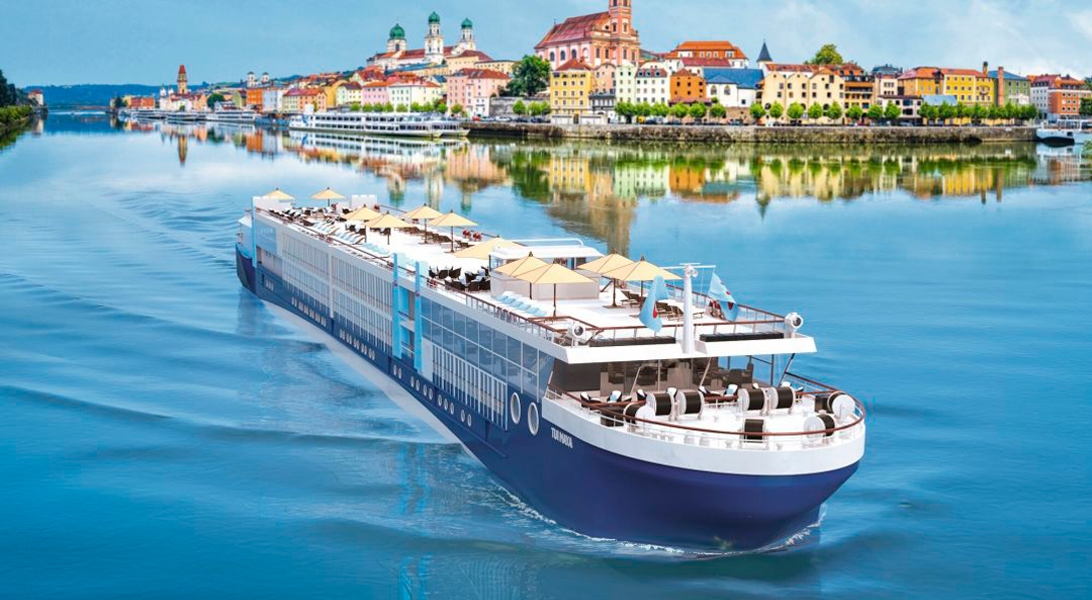




The images shown are for illustration purposes only and may not be an exact representation of what you find on the ship.
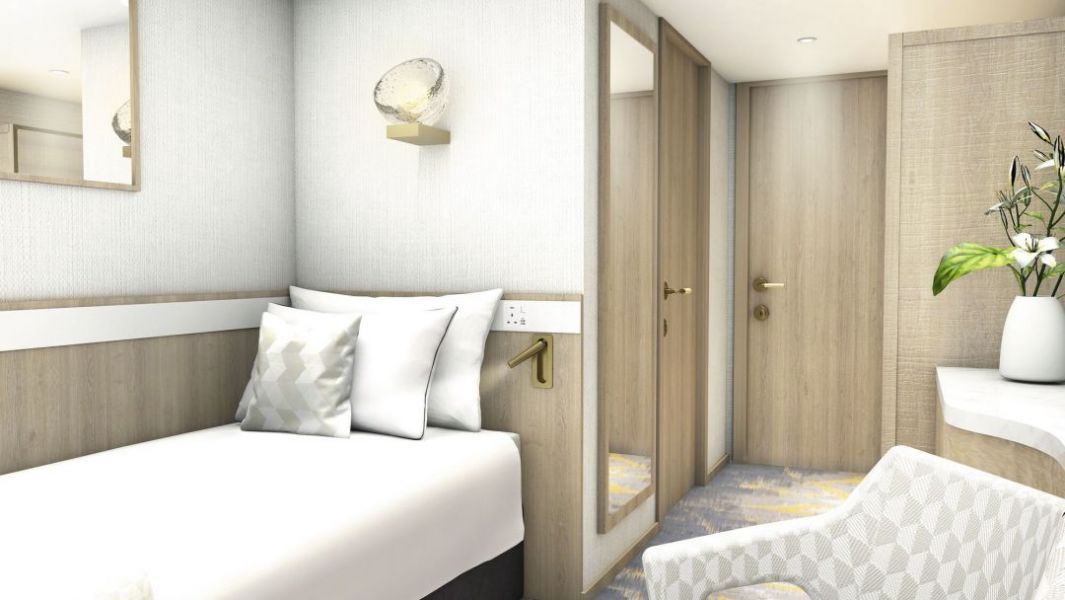
These single cabins are the same size as our standard cabins at 12m². Instead of a double bed, you’ll get a single, as well as a desk and lounge chair.
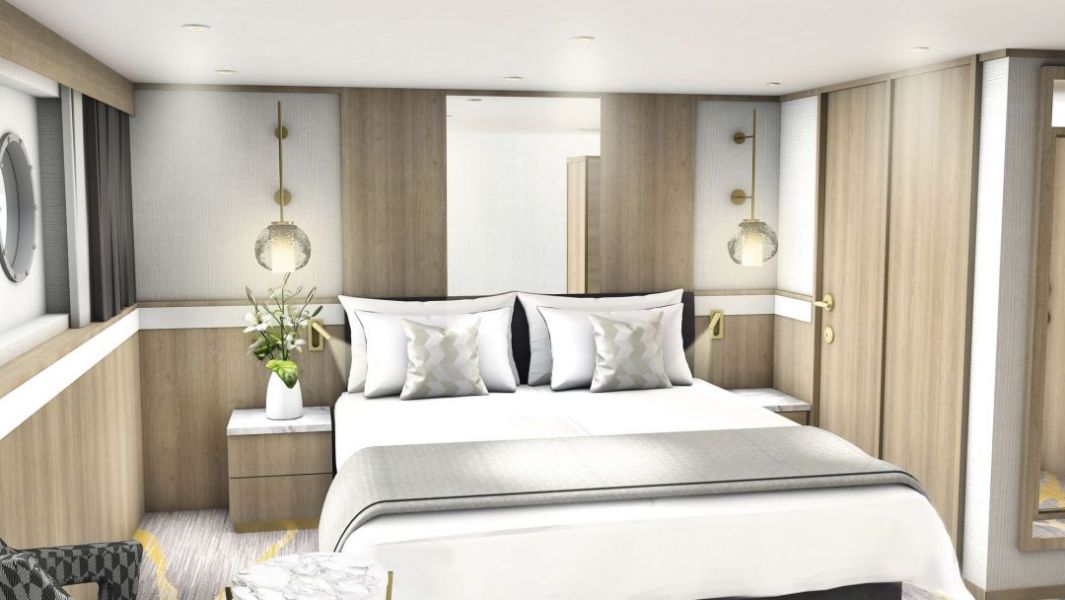
| Grade Code | From | To | |
| ZS01 | Deck 1 Superior Cabin | £1,026 | £1,026 |
You’ll get a little bit of extra space with a 15m² superior cabin, which lines up a king-size bed – which can be converted into two singles – along with a desk and a lounge chair.
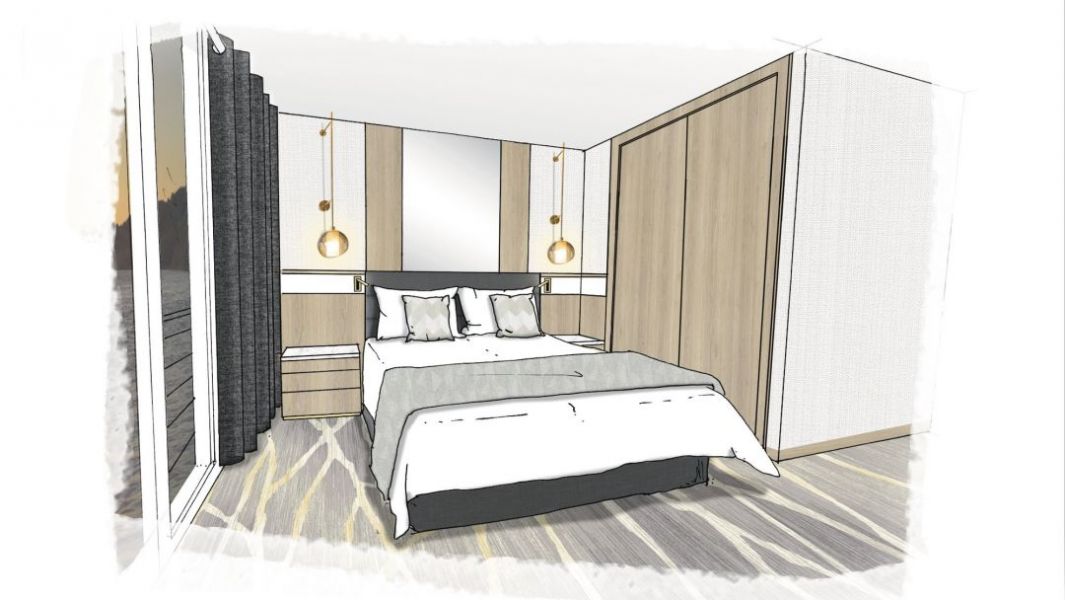
These cabins are the same size as all the standard cabins, at 12m², but they come with the added bonus of a French balcony. Floor-to-ceiling doors also make the views unmissable. There’s a desk and a fixed double bed.
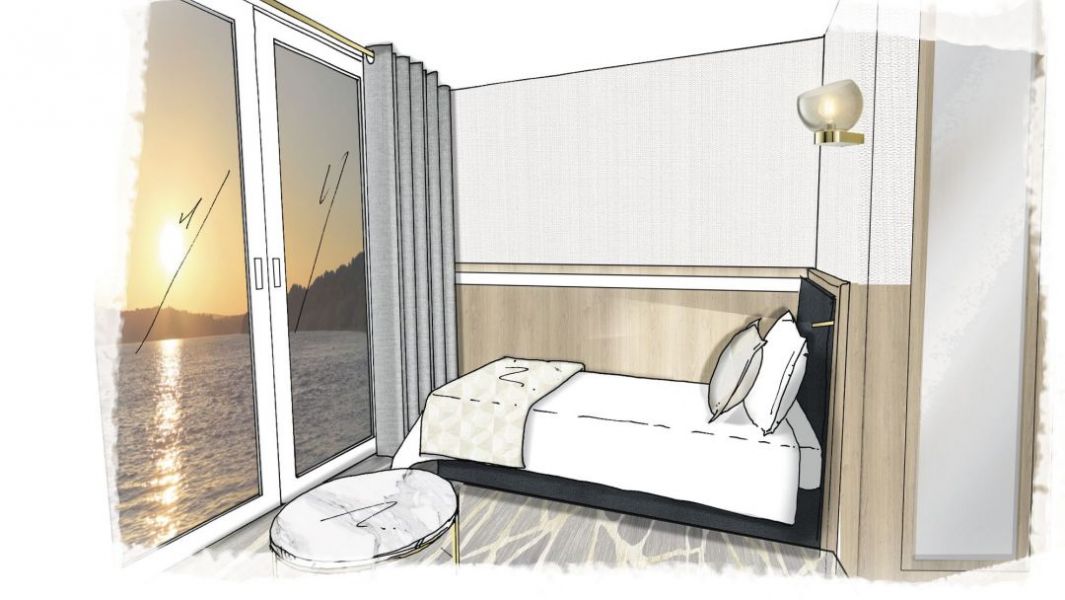
These are like our standard single cabins, but instead of a porthole, you can take in the view from your own French balcony, which is complemented by floor-to-ceiling glass doors. That’s on top of a single bed, a desk and a lounge chair. Please note, the cabin image is the planned appearance.
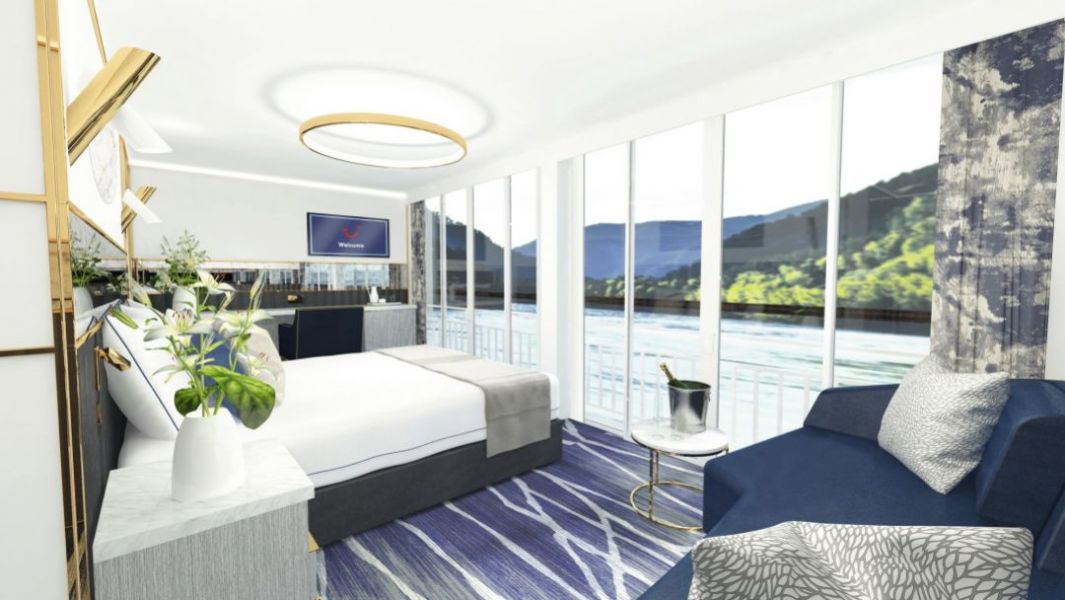
Treat yourself to a French balcony suite, so you can make the most of the views. At 24m², they pack in a king-size bed, which can be converted into two singles. Plus, you’ll also get the added luxury of a bigger bathroom, a dressing area, a sofa, a coffee table and a desk. Please note, the cabin image is the planned appearance.
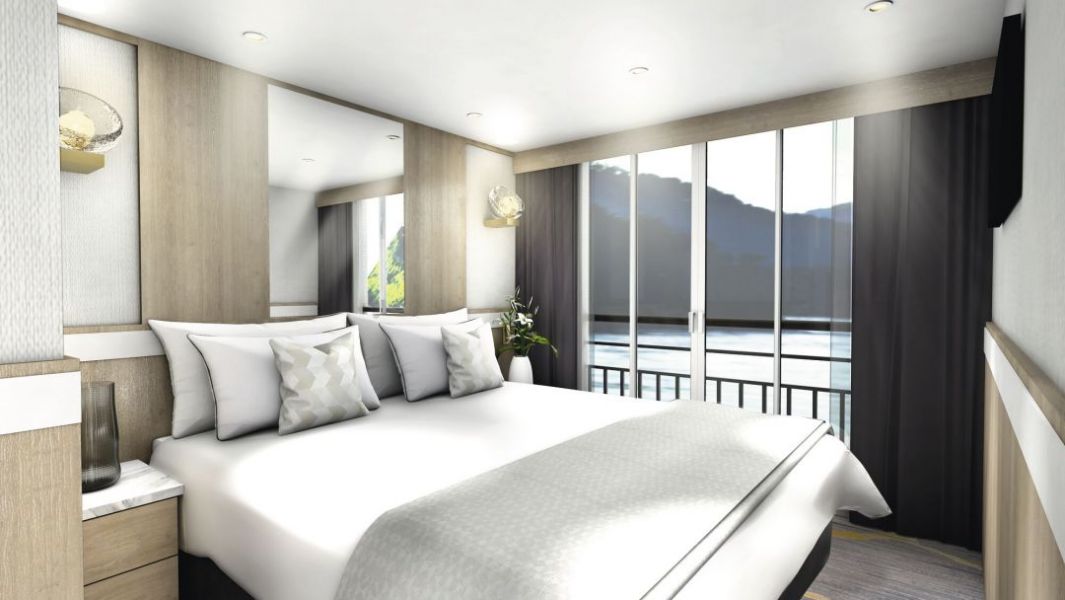
On Deck 2, the standard cabins come with a full-sized window, instead of a porthole. They’re still 12m2 and come with a desk and a fixed double bed.
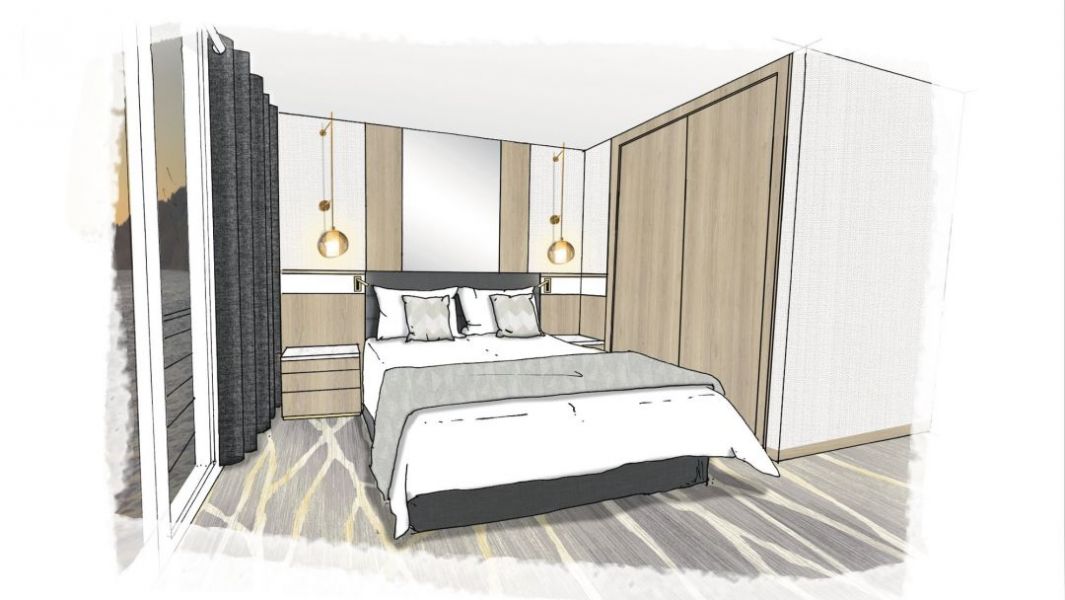
Just like the superior cabins on Deck 1, these ones line up a king-size bed, which can be made into two singles, plus a desk and a lounge chair. They’re still 15m², but floor-to-ceiling glass doors lead out onto a French balcony. Please note, the cabin image is the planned appearance.

These cabins are the same size as all the standard cabins, at 12m², but they come with the added bonus of a French balcony. Floor-to-ceiling doors also make the views unmissable. There’s a desk and a fixed double bed.

Treat yourself to a French balcony suite, so you can make the most of the views. At 24m², they pack in a king-size bed, which can be converted into two singles. Plus, you’ll also get the added luxury of a bigger bathroom, a dressing area, a sofa, a coffee table and a desk. Please note, the cabin image is the planned appearance.
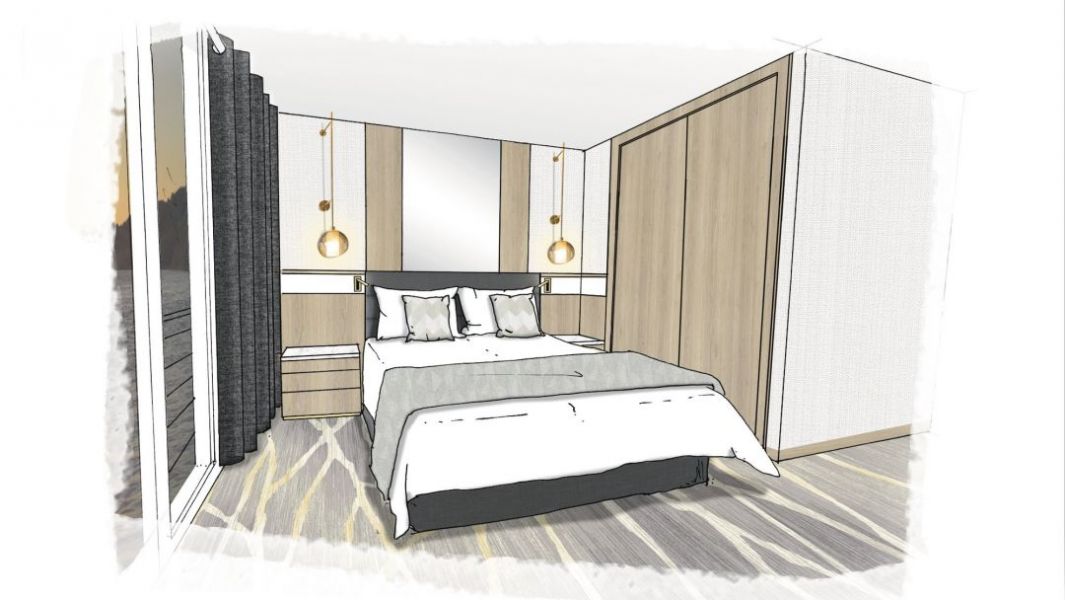
Just like the superior cabins on Deck 1, these ones line up a king-size bed, which can be made into two singles, plus a desk and a lounge chair. They’re still 15m², but floor-to-ceiling glass doors lead out onto a French balcony. Please note, the cabin image is the planned appearance.
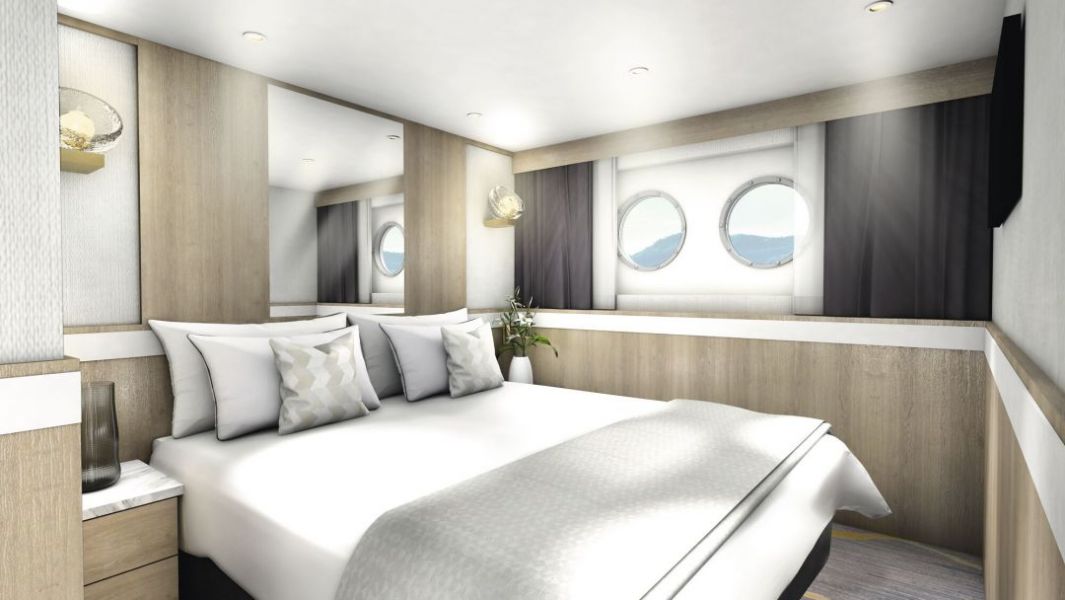
Our standard cabins measure up at 12m² and come with a desk and a fixed double bed.
The images shown are for illustration purposes only and may not be an exact representation of what you find on the ship.

As well as sunbeds, the top deck’s laid out with tables and chairs for al fresco dining. When the weather permits, we’ll put on outdoor events, like barbecues. You can get drinks up here, too.
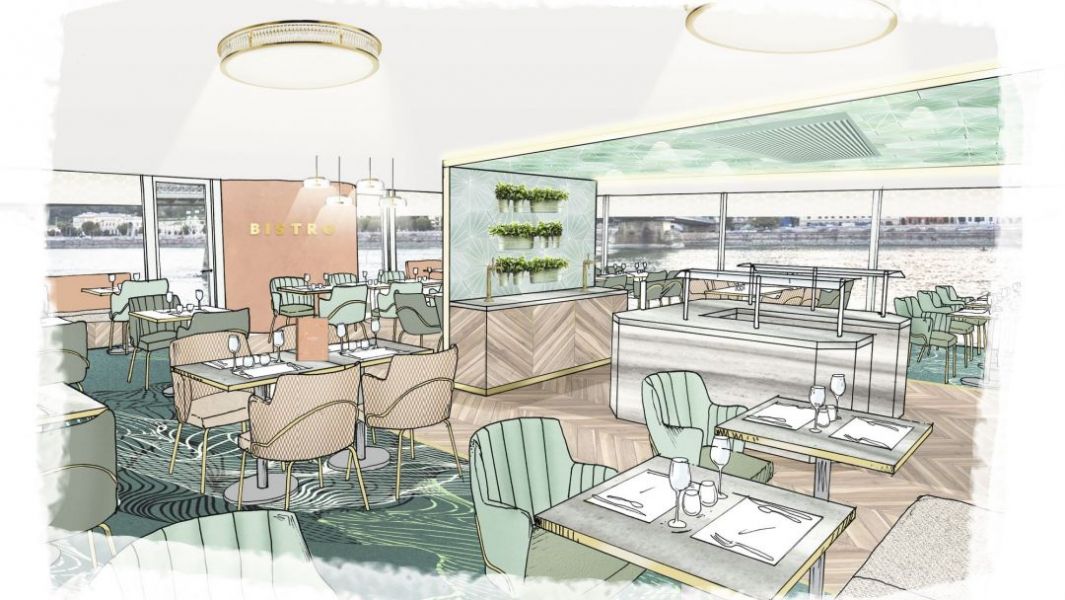
Things are a little more casual in Bistro, our second restaurant. It’s attached at the hip with Verdastro, giving you an extra dining option. Like Verdastro, it’s open for breakfast, lunch and dinner. Plus, you can choose from the à la carte menu, or sample a bit of everything at the buffet.
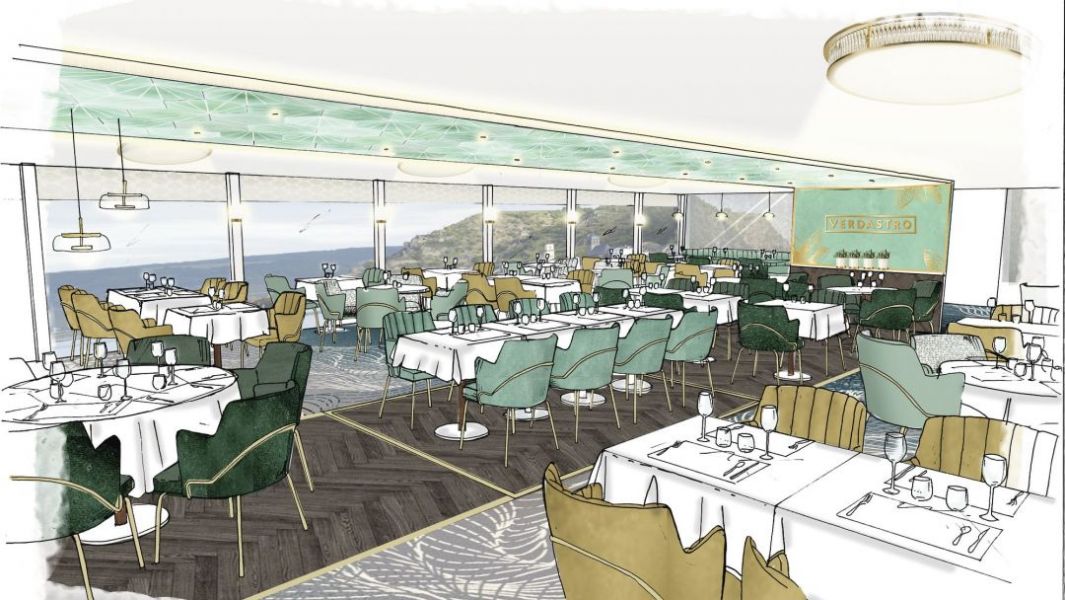
There’s an elegant green-and-gold colour scheme in our main restaurant, which serves breakfast, lunch and dinner. The menu changes daily, with fresh, seasonal food sourced from local suppliers. A buffet station puts on a pile-your-plate-high spread for breakfast and lunch, as well. Meanwhile, dinner is an à la carte affair with waiter service. Seating-wise, you can pick from tables for two, or pull up a chair with friends on a table for four or six.
The images shown are for illustration purposes only and may not be an exact representation of what you find on the ship.
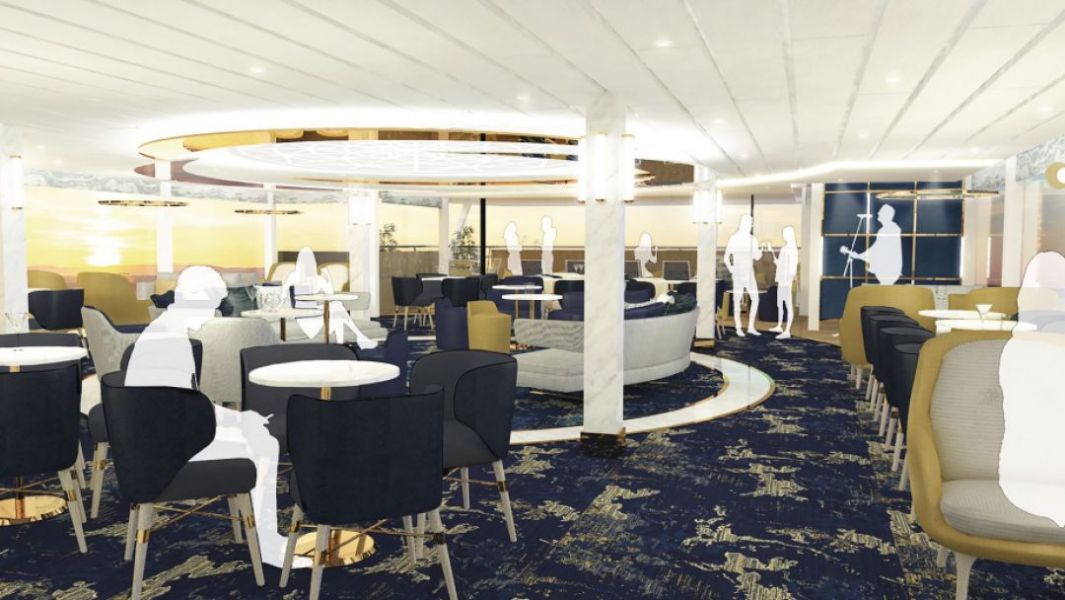
This lounge takes pride of place at the heart of our ships. As with all our venues, you can expect widescreen windows for admiring the panoramic views. You can get an even better look from the outdoor terrace, though – it’s a sheltered spot, kitted out with comfy sofas and heaters. After dark, Observatory hosts the nightly entertainment, which ranges from talented musicians to special guest acts, like comedians.
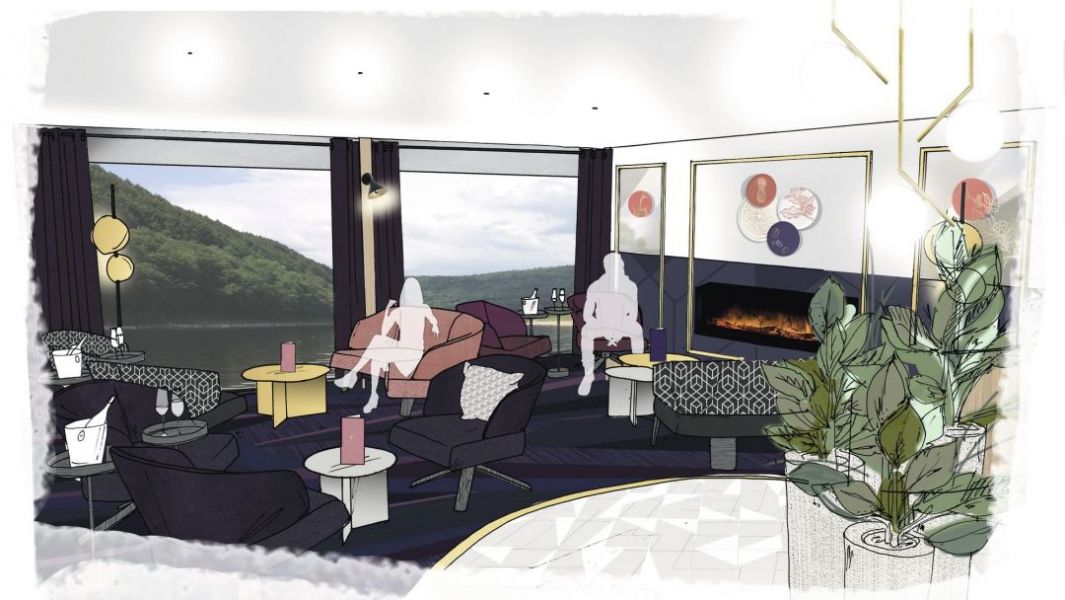
Coffee and cocktails are the cornerstones of this bar. Plush navy chairs, brass fittings and mirrored tables set a sophisticated scene. By day, you can sip a coffee* while taking in the views. At night, you can clink pre-dinner cocktails* in front of a roaring digital fireplace, before heading to one of the restaurants.
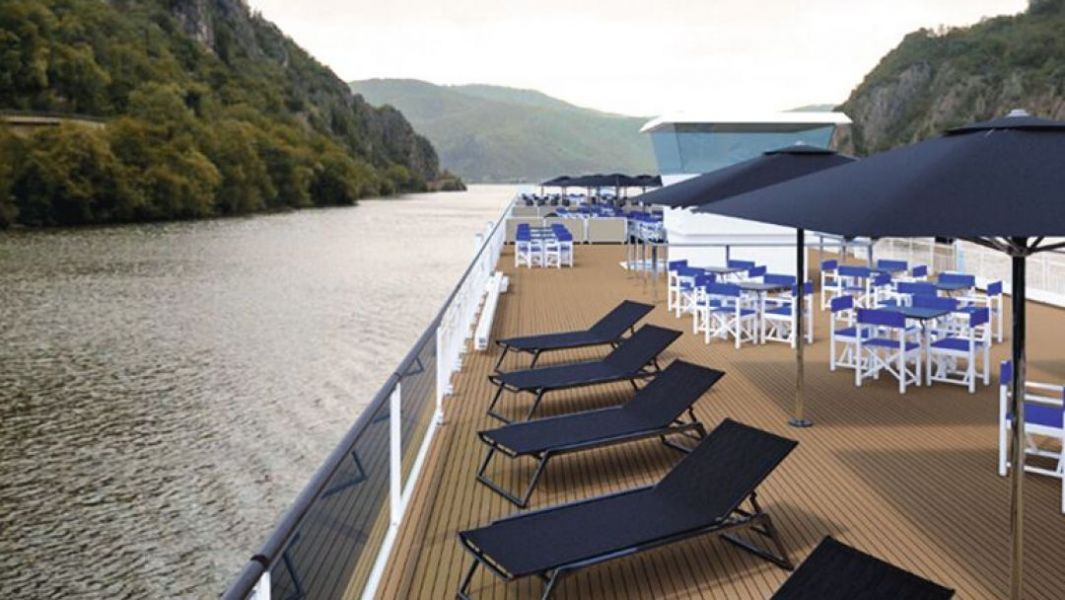
The views from the top deck are worth swooning over, but that’s not all it’s good for. It’s split into zones, with different areas for relaxation and activities. You’ll find a space for barbecues, sofas for lounging on, a sunbathing space with daybeds and sunbeds, and a herb garden. When you want to switch up the pace, there’s an area for activities, where yoga, pilates and stretching classes take place. You can check the full activity schedule once you’re onboard.
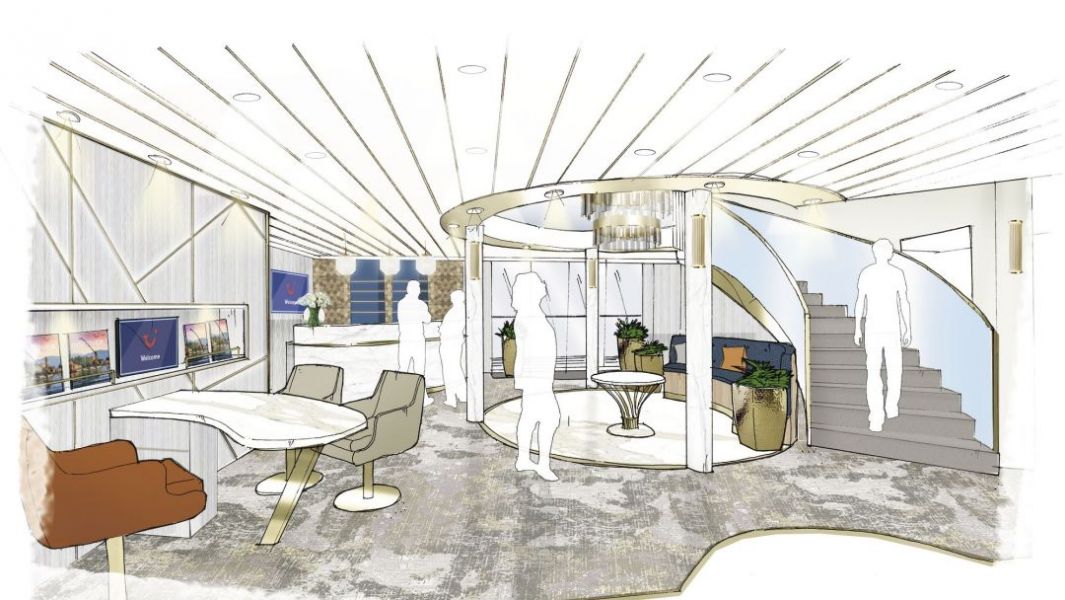
The images shown are for illustration purposes only and may not be an exact representation of what you find on the ship.
The images shown are for illustration purposes only and may not be an exact representation of what you find on the ship.
| Return flights including luggage allowance | |||
| Overseas Transfers | |||
| 7 nights cruising on the Rhine | |||
| Port Taxes and Fees | |||
 | ABTA and ATOL Protection* | ||
Date 7th Jul 2023 |
Nts 7 |
Please call for availability |
| Oceanview staterooms from | £1,026pp | ||
| ZS01 | Deck 1 Superior Cabin | £1,026pp | |
| Oceanview staterooms from | £1,026pp | ||
| ZS01 | Deck 1 Superior Cabin | £1,026pp | |
Fusion Cruises when selling travel arrangements is a trading name of The Midcounties Co-operative Ltd. Fusion Cruises is an Accredited Body Member of Midcounties Co-operative Travel Consortium. (ABTA:P6652, ATOL:6053).
Book with Confidence. We are a Member of ABTA which means you have the benefit of ABTA’s assistance and Code of Conduct.
Some of the flights and flight-inclusive holidays on this website are financially protected by the ATOL scheme but ATOL protection does not apply to all holiday and travel services offered on this website. This website will provide you with information on the protection that applies in the case of each holiday and travel service offered before you make your booking. If you do not receive an ATOL Certificate then the booking will not be ATOL protected. If you do receive an ATOL Certificate but all parts of your trip are not listed on it, those parts will not be ATOL protected. Please see our booking conditions for information, or for more information about financial protection and the ATOL Certificate go to: www.caa.co.uk
